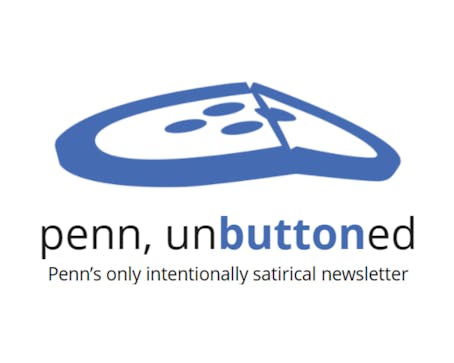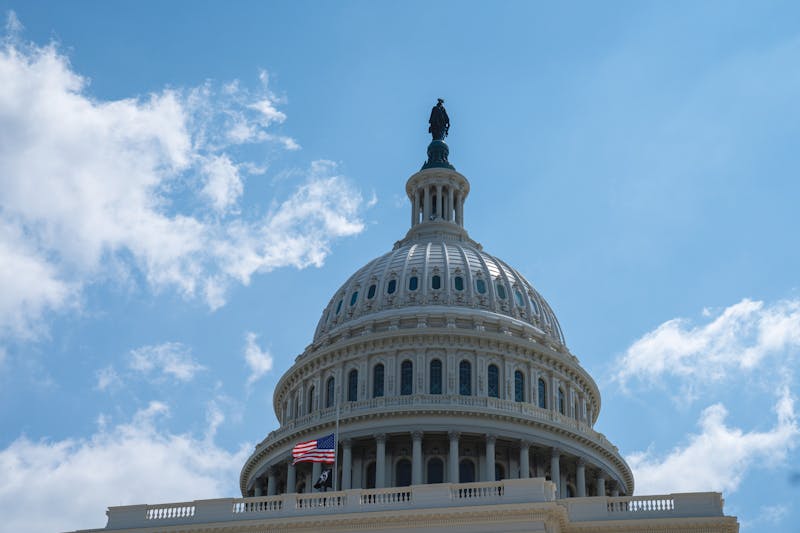
Senior columnist Mritika Senthil examines Interim Penn President Larry Jameson's email criticizing federal research funding cuts.
Credit: Abhiram JuvvadiA recent email from Interim Penn President Larry Jameson criticized federal funding cuts announced by the National Institutes of Health, the latest development in the Trump administration’s broader move to control “wasteful spending” — including research expenses. In the following days, Penn made the “last-minute” decision to cut admissions across graduate programs as a response to broader funding issues.
I understand Penn administration’s concern that the NIH’s measures will restrict medical research developments and compromise jobs. The sudden reduction in cost reimbursements from around 27% to 15% would force many research institutions to find alternative funding sources. As an adverse outcome, in New York alone, it’s estimated that 30,000 healthcare professionals — including support staff and administrative personnel — are on the brink of unemployment. However, the email is not just informational — it’s propaganda intended to deflect from bad press as Penn seeks to challenge funding cuts in court and professors expect to rescind many graduate student acceptances.
Jameson’s email begins by threatening the potential loss of “$240 million in annual federal funding,” which could increase to “$315 million” if other agencies follow the NIH’s lead. Yet, despite laying out the worst-case scenario, the email doesn’t specify how Penn plans to offset this shortfall.
The affected facilities and administrative costs are basically overhead expenses included in research grants to cover indirect costs like lab upkeep, administrative work, and regulatory compliance. Penn’s current negotiated rate is 62.5%, so the 15% cap represents a dramatic reduction. However, the kicker is that even at 62.5%, federal funding only covers about half of Penn’s indirect research costs. So, how has Penn been covering the rest?
According to the latest report from Penn’s Division of Finance, the University wrapped up fiscal year 2024 with total net assets of $31 billion, an increase of $1.2 billion from the previous year. The endowment alone is $22.3 billion, having grown by $1.4 billion last year. With that level of financial security, the University has considerable flexibility to absorb funding cuts — at least in the short term.
Furthermore, Penn’s endowment distributed $1.1 billion to support its academic budget last year, contributing to just 18% of the total academic budget. If the recent funding cuts are as catastrophic as Jameson claims, why isn’t there a discussion about temporarily increasing the endowment payout rate to close the gap? Penn is clearly choosing to continue growing its endowment rather than using it to cushion the impact of funding cuts.
After running the numbers, I found that Penn’s operating revenue had also increased by $798 million to $15.8 billion last year, with a consolidated operating margin of $660 million, or 4.2%. A significant amount of this revenue — $9.5 billion to be exact — comes through patient service. To put this value in perspective, $9.5 billion is more than the revenue of some Fortune 500 companies, like Hyatt Hotels or The Hershey Company.
In other words, even without federal grant increases, Penn has multiple revenue streams to sustain its operations. While the research Penn conducts is undeniably important, the administration’s messaging leans more toward fearmongering than informing.
The email continues by implying that budget cuts would directly impact research on “CAR T-cell therapy, mRNA vaccine technology, gene editing, and treatments for rare diseases.” But it fails to clarify how much of Penn’s funding actually goes to these specific research areas. As per the financial report, Penn’s total sponsored program revenue — which includes NIH grants — was $1.4 billion, with $811.3 million directly coming from the NIH. But not all of this capital goes to the high-profile research areas listed in the email. A significant percent supports basic infrastructure, administrative expenses, and early-stage research that doesn’t immediately make headlines.
Moreover, Penn spent $1.1 billion on capital expenditures last year, including $66 million on the Ott Center for Track and Field. These are strategic expenses, but if Penn is in dire straits, why prioritize infrastructure over research? Just last month, the Undergraduate Assembly passed a resolution calling for greater transparency in the University’s investments. The UA’s move followed a student referendum in which 73.4% of voters were in favor of the University Board of Trustees publicly disclosing all investments held through the University’s endowment fund. While Penn isn’t legally obligated to follow student demands in the way that, for instance, a company has a fiduciary duty to its shareholders, universities are accountable to their students.
By grouping itself with research institutions that are heavily dependent on federal grants, Penn shifts the focus away from its own parsimony and can better ally support during high-profile legal activity. A more honest take would have at least acknowledged why the NIH cut costs. Instead, Jameson framed the NIH’s decision as arbitrary and malicious, undermining his leadership’s commitment to “quieting the institution’s voice” so that faculty expertise and objective, data-driven insights can take precedence.
MRITIKA SENTHIL is a sophomore from Columbia, S.C. Her email is mritikas@upenn.edu.
The Daily Pennsylvanian is an independent, student-run newspaper. Please consider making a donation to support the coverage that shapes the University. Your generosity ensures a future of strong journalism at Penn.
Donate












